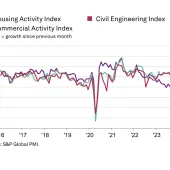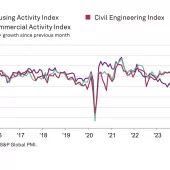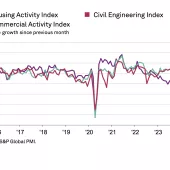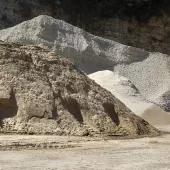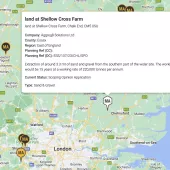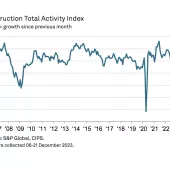Aggregates Markets Look Encouraging for the Next Few Years

First published in the November 2016 issue of Quarry Management
The Highways England Road Investment Strategy shows a small cash reduction in 2017/18 followed by a significant increase in 2019/20. This is one of the few longer-term indicators of aggregates demand and should be encouraging to producers that markets can be sustained and grow. However, successive governments have shown an inability to bring forward projects on time. Difficulties over financing, planning and environmental issues can delay schemes. At least these road projects are now in the pipeline, even if start dates continue to be uncertain.
At the time of writing, the Autumn Statement is due and it is expected that a further boost is to be made to infrastructure spending. It is encouraging that all mainstream political parties now understand the importance of infrastructure to the wider economy.
Hinkley Point has finally been given the green light. Work has already begun on site; major works are expected to start in the second half of 2018. For the relatively small number of aggregates companies that will supply Hinkley Point, this will provide a major boost to demand.
There are also significant regional variations in demand elsewhere in the country. Information on trends in local markets is more limited. Data on ready-mixed concrete markets show that demand in London is some 40% higher than in 2007. This is due to Crossrail and other major projects, whilst the economic recession left the capital largely unaffected. No other region in Great Britain shows even any increase over the same period.
In the current year, several road projects in England have helped boost demand which otherwise would have been sluggish. In Scotland, projects in the Aberdeen area are helping demand.
The Construction Products Association is forecasting a broadly flat construction market in 2017 and 2018. Some further growth in housing will be offset by a decline in private commercial work. Some modest growth is expected in the education and health sectors over the next three years.
Under normal circumstances, a small increase in aggregates demand over the next few years could be forecast with a degree of confidence. This rise in demand is still likely to happen. The elephant in the room is Brexit. It is impossible to predict the outcome in trade negotiations with the rest of the world and what balance will be achieved between immigration and access to the EU single market. There are some exports and imports of aggregates but these represent a fairly small part of the market. As far as aggregates companies are concerned, it could be the indirect consequences of Brexit negotiations that affect business, more than the negotiations themselves. For example, the falling pound affecting inflation, the effects on government budgets, and government policy towards specific regions and industries previously helped by the EU.
The accompanying graph shows the moving average of sand and gravel and crushed rock production since 2010. It shows that after a weak 2012, aggregates markets have been picking up. The recovery has been stronger in crushed rock than sand and gravel. In the latest available reporting period – the 12 months to June 2016 – crushed rock sales were higher by 5.5% on the preceding year. This compares with a rise of just 0.4% in sand and gravel over the same period.
Crushed rock has been increasing its use over the long term in concrete applications, at the expense of sand and gravel. This would have been a factor in the more recent trend, but is unlikely to be the main reason. Aggregates markets have been helped by supplies to major road and infrastructure projects, where crushed rock is often preferred over sand and gravel. The main strength in crushed rock production in recent quarters has been in the East Midlands and northern England, where crushed rock is more prevalent than sand and gravel. The concrete market in London has not been showing the same increases as there were two years ago, which affects sand and gravel demand.
The latest BDS forecast is for aggregates demand to be higher by 3% in 2016. A projection for next year needs to allow for a fairly good 2016. We are projecting a similar market in 2017 to this year. By 2018, the planned infrastructure projects should begin to see some further growth of around 2%. By then the results of the Brexit negotiations will be much clearer, which could affect the market – either way.
- This is the first of a series of features to be published every two months in Quarry Management by BDS Marketing Research into trends in the markets for aggregates, asphalt, concrete and cement. For further information on BDS-published reports on these markets and bespoke client research, please contact: andy.sales@bdsmarketing.co.uk; or tel: (01761) 433035.
- Subscribe to Quarry Management, the monthly journal for the mineral products industry, to read articles before they appear on Agg-Net.com

